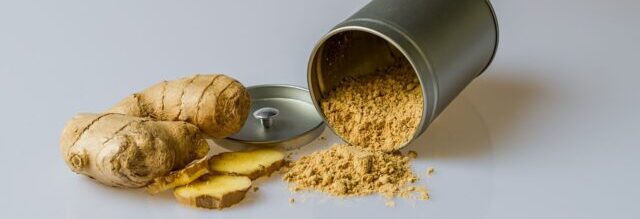Pain. We all have it. Whether it's rarely, sometimes or chronic.
Pain is a fact of life. And I’m not talking about the kind of pain brought about by that one relative who gets on your everlasting nerves.
I’m talking about physical pain. It comes in the form of a headache, backache, joint pain, migraine, an injury, etc.
And with pain comes inflammation or vice versa.
So it’s almost impossible to treat one without treating the other – with any degree of lasting success.
There are plenty of choices at your local drugstore – and they proclaim all kinds of great results. But at what cost to your health? You may gain relief from the pain, but what price do you pay in return (besides the one you paid at checkout)? Do you know what adverse reactions can happen with these over-the-counter meds?
THE PROBLEM WITH OTC MEDS
Have you ever read the “possible side effects” on a bottle of Tylenol? Are you aware of the symptoms of overdosing on this acetaminophen? I never even considered that possibility.
Turns out that acetaminophen overdose is actually the leading cause for calls to Poison Control Centers across the U.S. and is responsible for more than 56,000 ER visits, 2,600 hospitalizations, and 458 deaths due to acute liver failure according to Dr. Mercola. And that’s not even all the bad news – there’s more if you want to read Dr. Mercola’s article and additional links.
And don’t even get me started on NSAIDs (Non-Steroidal Anti-Inflammatory Drugs) – a family of drugs which includes Aspirin and Ibuprofen (Aleve, Advil, Motrin, Bayer, Excedrin and others, including generic versions). The problem with NSAIDs is that they often disrupt healthy gut flora, can increase intestinal permeability (leaky gut), and even more concerning problems with long-term use. NSAIDs are especially problematic for anyone dealing with a leaky gut or an autoimmune disease because of its damaging effects on the gut.
It’s important to realize that most medications simply mask the pain or reduce the inflammation. The root of the problem remains. You are more likely to heal and recover from your pain once you heal and recover from what’s causing your inflammation/pain in the first place.
WHAT'S THE ALTERNATIVE?
Some people take these drugs as part of a medical treatment plan and others take them as part of their normal pain management for aches, pains, etc.
DISCLAIMER: I’m not trying to counter any medical advice or treatment plans given by a licensed physician, I’m simply providing a few natural options you may want to consider – and perhaps even implement for yourself.
OTC remedies are so easily available and presumably safe that we reach for them at the first sign of an oncoming headache, muscle soreness, twisted ankle, aching back, and everything else that needs relief. But there must be a more natural way for us to get pain relief – something without all the adverse side-effects and risks.
NATURAL ANTI-INFLAMMATORIES

1. Turmeric is a vibrant yellow spice that’s been used for thousands of years as a traditional medicine to treat infections, wounds, colds and more. Turmeric contains curcumin which has potent anti-inflammatory side effects, especially for acute inflammation like a cut or scrape. Add turmeric to your diet by cooking with it (fresh turmeric can be found in the produce section of your grocer or you can use the dried herb in the spice aisle) or drinking turmeric tea or try a supplement with clean ingredients. Use caution when cooking with turmeric – it will stain not only your skin, but also your clothes.

2. Ginger has also been used for thousands of years to treat upset stomachs, headaches, infections, and help with digestion. Besides acting as an anti-inflammatory agent, it also has a high volume of antioxidants. Ginger is easy to add to your daily diet and can be found fresh in the produce section of your grocer or as a ground spice in the spice aisle. Use ginger when cooking, in tea or juiced or take it as a supplement.
3. Boswelia is an Ayurvedic herb which can be just as effective as NSAIDs for pain relief. Boswelia offers relief from acute and chronic inflammation, so it’s a pretty potent herb. It’s been known to help with headaches, arthritis, joint pain, PMS symptoms, back pain, IBS/Chron’s/UC sufferers and more. Can be taken as a supplement or used as a topical. (Please note that Boswelia has reported possible side effects of reflux and heartburn.)
4. Bromelain is an enzyme extracted from the pineapple plant. It’s been shown to be effective in treating rheumatoid arthritis. Sold in health stores as a digestive aid supplement, which is another great benefit! Take between meals for inflammation and pain.
NATURAL PAIN RELIEVERS

- Capsaicin is a clinically proven and safe topical therapy for the relief of arthritis pain. There are several OTC creams which contain capsaicin, but you can easily make your own by mixing one part cayenne powder with five parts warmed vaseline. *Be sure to wash your hands very well after using capsaicin in any form since it is the component in hot peppers that makes them spicy!
- Boswelia (see above)
- Turmeric (see above)
- Bromelain (see above)
THE BOTTOM LINE
Listen, there’s certainly a time and place for painkillers and new research is being done all the time to improve our options. They’re even working on making NSAIDs less harmful to the gut which is a big step in the right direction! A step in the right direction for you might be to pause and think before reaching for that OTC drug and giving one of these natural remedies a go.
Let’s remember that there are other contributing factors to pain – like diet, exercise (or lack thereof), stress and sleep patterns, etc. Using these natural pain remedies along with looking at these other factors will help you get to the root of your problem so that you can discover the true health you’ve been looking for.
Best to you,




